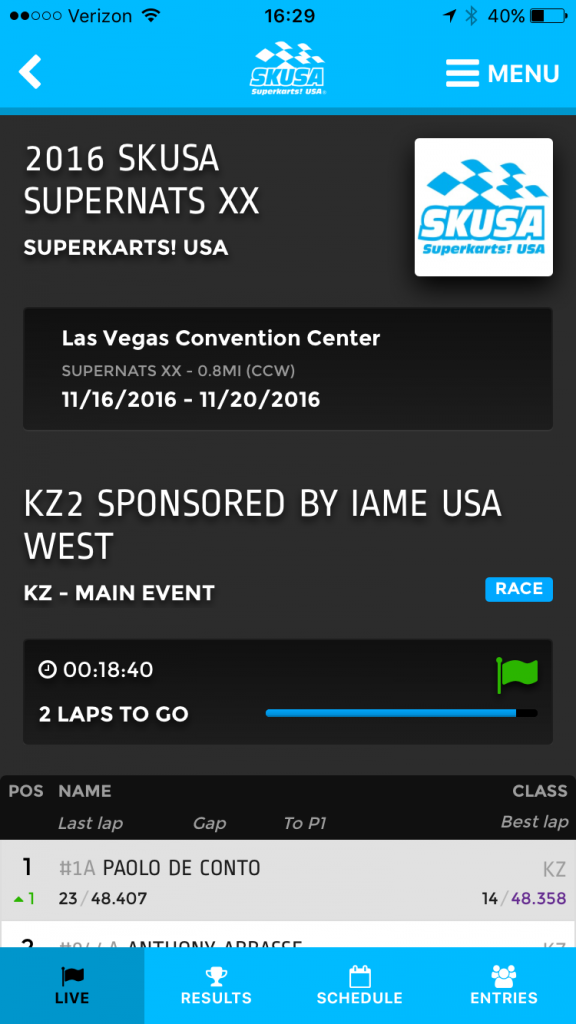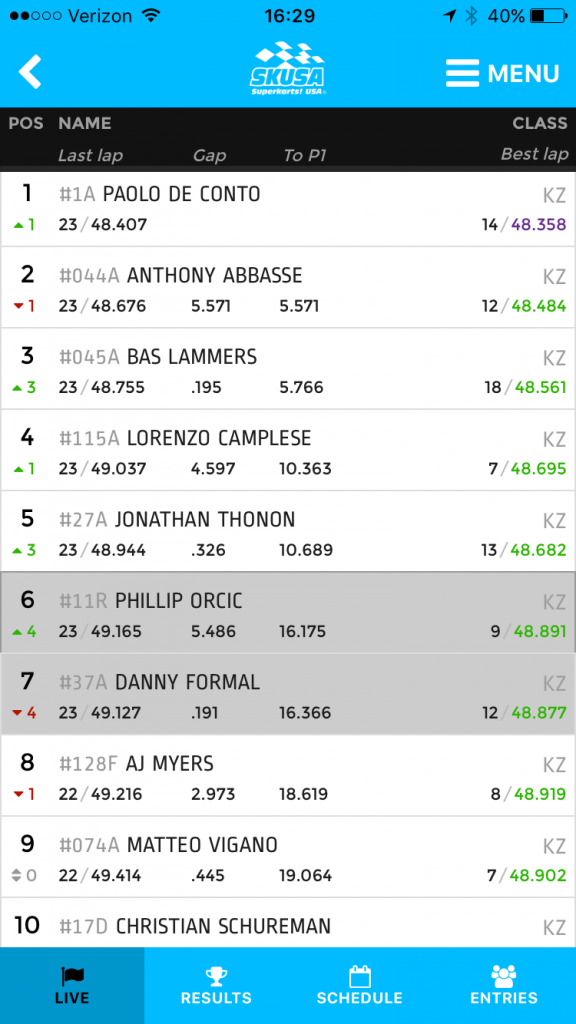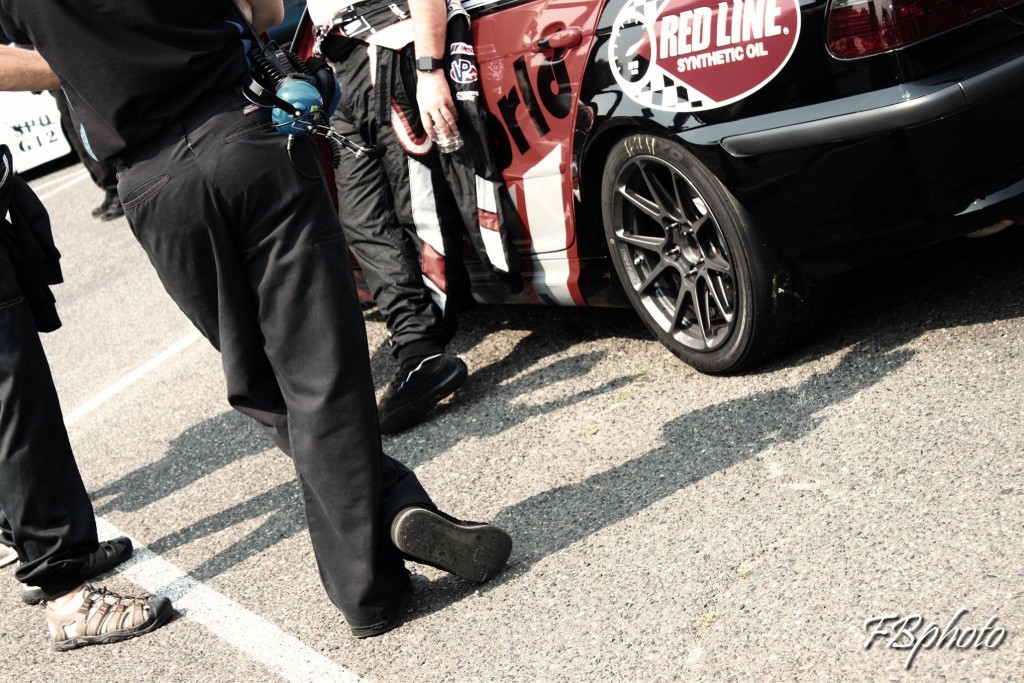Here’s something new on the RaceHero blog: a guest post for drivers that you’re going to love… because we all love to go faster! Working with Ross Bentley, author of the Speed Secrets books, e-books and webinars, we’re sharing an issue from his Speed Secrets Weekly newsletter. It’s a weekly email with juicy content for anyone who wants to perform at their best. This time we’re discussing how to tell when it’s the car (or motorcycle, kart, snowmobile, boat…) and when it’s the driver with one specific technique. Enjoy!
Driver Control Bandwidth
We know the numbers. They are right there on the dash, glaring at us. Also, we know what our best time has been in the past.
Looking at the infamous “Sheet,” we see the leader’s time.
At this point, it starts to boil inside us: frustration, disbelief, and sometimes anger. “How can we be that far off the pace?” It seems like an impossible jump to the leader’s time. And, to make it more of a pisser, we aren’t even near our own best time.
Instantly, justification attribution kicks in and we start racer bingo. The leader is (insert favorite):
- cheating
- spending more money
- using better tires
- using a better motor
- got a tow
- had better track conditions
- has the newer car
- did we suggest cheating?
At the minimum, anxiety is setting in, if not full blown panic.
Before the next session, we have to tweak something on the car such as tire pressure, shocks, anything that will make us go faster and try to catch the leader. Alas, we run the next session and we don’t go faster, but we actually go slower! AAARG!!
We have all been there. But what really happened?
Even though we all are quick to make changes to the car, thinking something is wrong with it, or the ambient conditions require a change, there is a high likelihood the car is not the reason for slower times. At this point, we must admit that the biggest variable in racing is driving, and chances are someone else is doing a better job at driving than we are. So what can be done to improve our driving?
Driver control bandwidth is a concept that we rarely think about, if ever. This relates to the specific tasks we perform in the seat and where they occur on the track. In the case mentioned above, it’s likely that our car control points have migrated or have a wider operating range of repeatability. So, we actually end up going slower, not because of setup, but rather less bandwidth for driver control. Just like your internet connection, more bandwidth is more capacity.
From an engineering standpoint, we can manipulate thrust angles, roll centers, frequency responses, or many other engineering factors by tweaking on the car; however, improving the car in a particular situation requires that it be consistently operated in that situation.
For example: If we have corner brake application points (or any driver task) that vary with each lap, then the handling for that corner becomes a statistical problem rather than a precision engineering challenge, as can be seen in these real-life examples below.
These graphs are the distance traveled per lap from the start/finish line in feet to where the brake pedal was first depressed.


The top graph is from a young inexperienced driver struggling to grasp the concept of reference points and is basically driving by the seat of his pants. The graph on the bottom is one of the best professional drivers I’ve ever worked with who is usually on the pole and often wins. It is easy to see that one is very consistent with driver control tasks and the other is…. well, all over the place and consistently at the back of the pack. Granted, the data is not from the same track, but the trend is obvious. Hint: Which one of these drivers has more consistent apex speeds?
It is easy to embrace and employ this concept to improve your own driving. The goal is to create and use a driving aid that shows us the repeatability of a task or its migration. It really is just that simple, so don’t try to make it hard.
How To Measure for Improvement
A good way to do this is with an objective metric that is readily available to most all racers, which is data. Relax, we’re not talking about those confusing squiggly lines, just a row of numbers listing the feet traveled to the brake (application and/or release) point, lap after lap for a given corner.
This doesn’t require an exotic data system or a complex engineering process. Any of the most basic systems from AiM, CDS, MoTec, Pi or any other brand that will allow you to create a “math channel” will do the job. No special sensors are required, although a brake pressure sensor makes it more clear, but it’s not absolutely required.
It is also nice if the data acquisition software has an export function to take the brake point listing and put it in an Excel spreadsheet (as shown above), but again, that is just eye candy and icing on the cake.
To create this driver aid, start by looking at your data. Identify a distance to the corner in question and pick a point that is a bit short of any anticipated braking point. Remember this distance. You can call it “corner entry.” Next, look through several laps to find a good average distance where the peak brake pressure or peak deceleration G occurs, and remember that number.
Use the math function in your software and create two constants, one for the corner entry distance and the other for the corner mid-distance, using the numbers from above.
Next, create a math channel that uses nested “IF” statements to see if the distance traveled (lap distance) falls between the two constants you created. If so, then check to see if the brake pressure or deceleration G has exceeded a specific value. I like to use 40 psi as my specific threshold value. Once that specific value has been exceeded, we can use this lap distance as the brake application point (as shown in the graphs above) and then make the value of the math channel return to zero for the remainder of the lap.
All that is left to do is to display the maximum value of the math channel in a table style display on your data software. Now you have distance traveled to the brake point for that corner during every lap of the run.
Creating a math channel such as this and using it to improve your driving consistency can result in a major improvement to your lap times.
Written by John Block from Auto-Ware for Speed Secrets Weekly. Follow John on Twitter at @autowareinc.












